Where in the world would you see Dolly the sheep flying through Scotland, hitching a ride to space on a rocket and collecting museum objects along the way? In our new game, Dolly and the Atom Smasher, of course!
The game was designed and made as part of a National Museums Scotland project, Game Jam, which brought together school pupils, game developers and museum objects. Pupils from Craigie High School in Dundee worked with Dundee Games Collective (DGC) and Lynsey McNab and Lynsey Anderson from the museum’s Community Engagement team.
Tom deMajo from DGC talks us through the ‘levels’ of the project.
Level 1: National Museum of Scotland
On the morning of our visit to the National Museum of Scotland we met the pupils and their teacher Kelsey at Craigie High School and boarded our minibus. The journey to Edinburgh was a good opportunity to introduce ourselves. Arriving at the impressive Museum building, we were met by Lynsey and Lynsey, who welcomed us and gave us a short tour of the museum.
The Lynseys took us to an open workspace where they had collected images of objects to be displayed in the museum’s new Science and Technology and Art, Design and Fashion galleries. We were invited to collect and arrange a selection of objects and discuss what made them interesting. We then heard more about the new galleries from two of the curators.
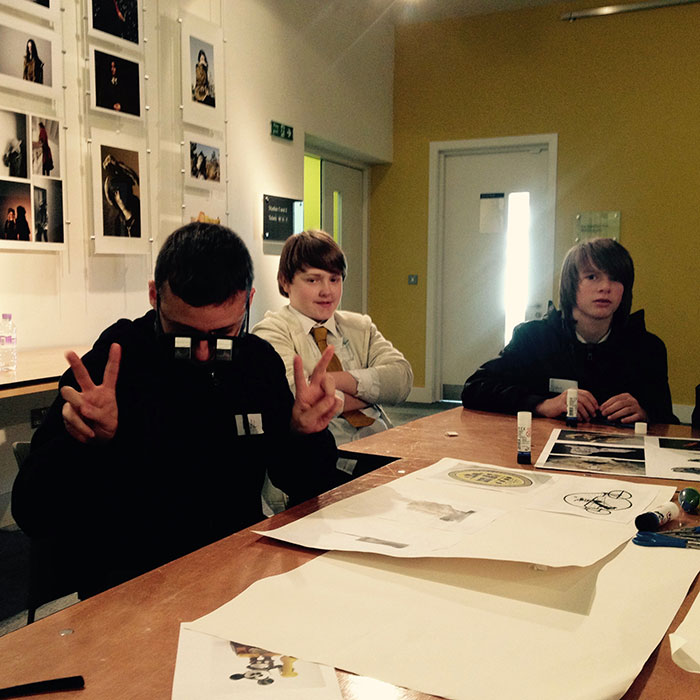
After lunch, we toured the Museum again, this time armed with sketchbooks to do some drawing in the Grand Gallery. The tour continued through into the modern parts of the Museum and ended up on the rooftop, where we got a cold, windy but sweeping view of Edinburgh.
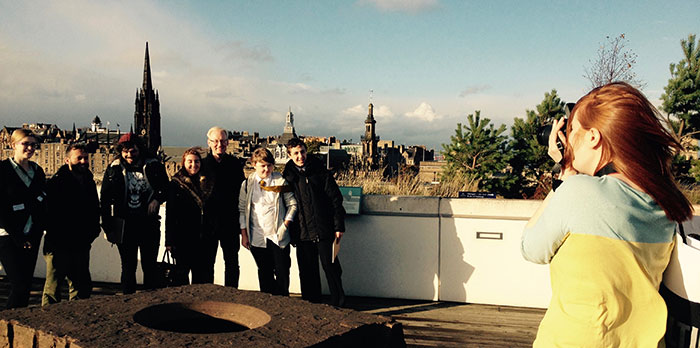
On the journey back the pupils were full of questions about the game making process and their time in the Museum. Mike was on hand to answer any questions, and managed to keep the conversation going for the entire journey. Engagement? Check.
Level 2: Game design
Our first workshop with the pupils was an introduction to game design – what makes a game a game, how do games work, and what works well? How best to do this? Play games! We chose a wide selection of games and experiences – mostly smaller, independent games – for the pupils to play. We wanted to introduce the pupils to less mainstream game ideas and give them some examples of simple game mechanics and styles which are super-fun but also easier to make. We split the pupils into small groups so we could keep them focussed on analysis and encourage them to think about what was happening in the game while playing it.
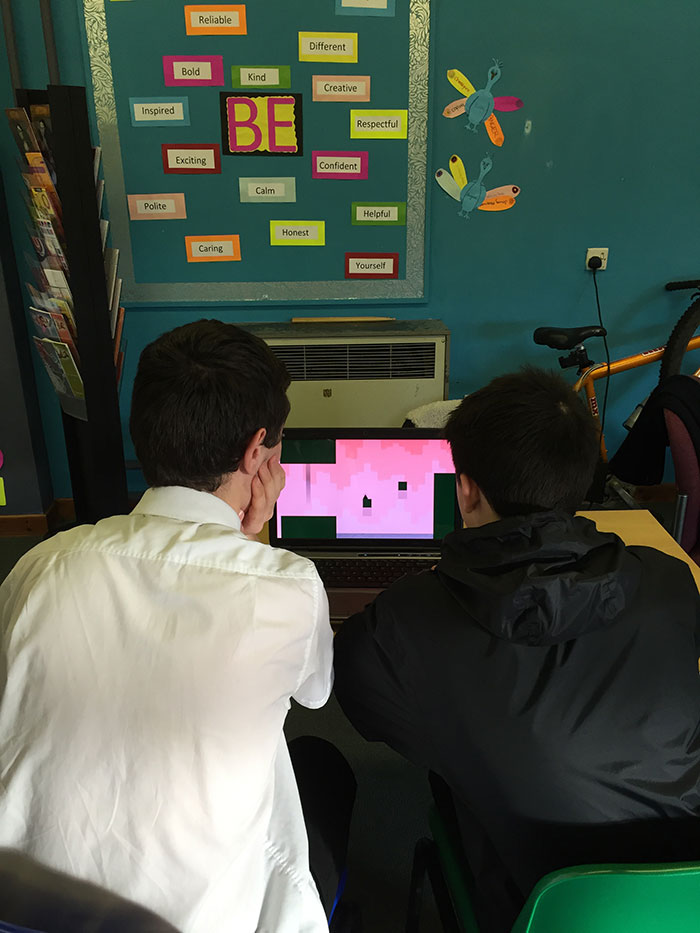
Want a go? Games played were:
- 140
- VVVVVV
- Vikings! Training School
- Fotonica
- A Cosmic Forest
- Supermeatboy
- Captain Forever Remix
- Silk
Total engagement ensued. We ended the session by having a go at designing our own games in small groups, using photographs of the museum collection.
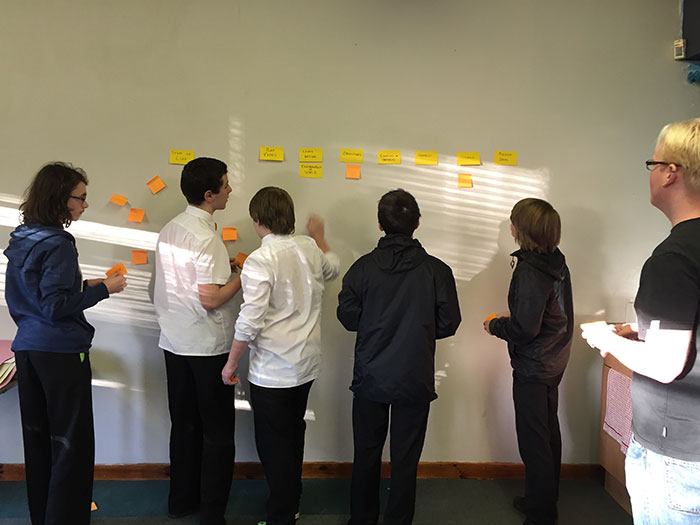
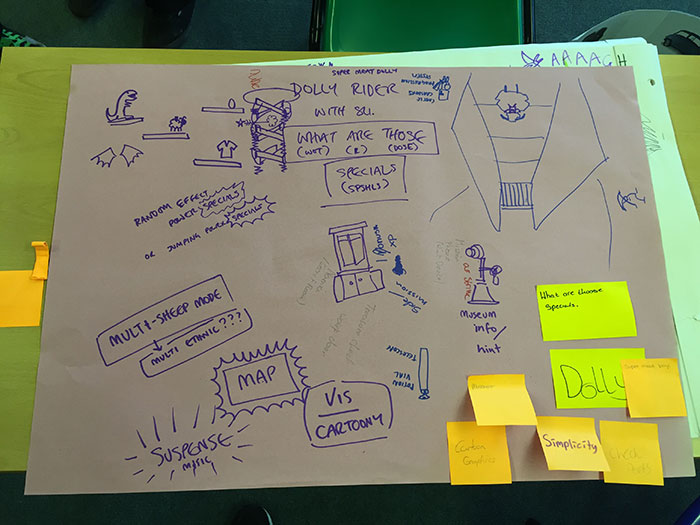
Level 3: Code
In the second workshop we started to explore the game development process in more detail by focusing on game physics programming. From jumping characters to gravity-controlled Weeble objects, we all had fun experimenting with changing values to see what happens. At one point we had hundreds of characters jumping so high they entered space, only to amusingly crash back down into a sandpit. This helped give pupils a sense of the control you’re able to achieve through programming. Albert followed this by creating a game from scratch in 30 minutes!
The previous week the pupils had enjoyed the endless runner game Fotonica and so Albert was able to recreate a basic version of the game using the Unity3D game engine. This illustrated how simple creating a game can be, especially when using the right tools. Again we ended the session by designing a number of games to present to each other.
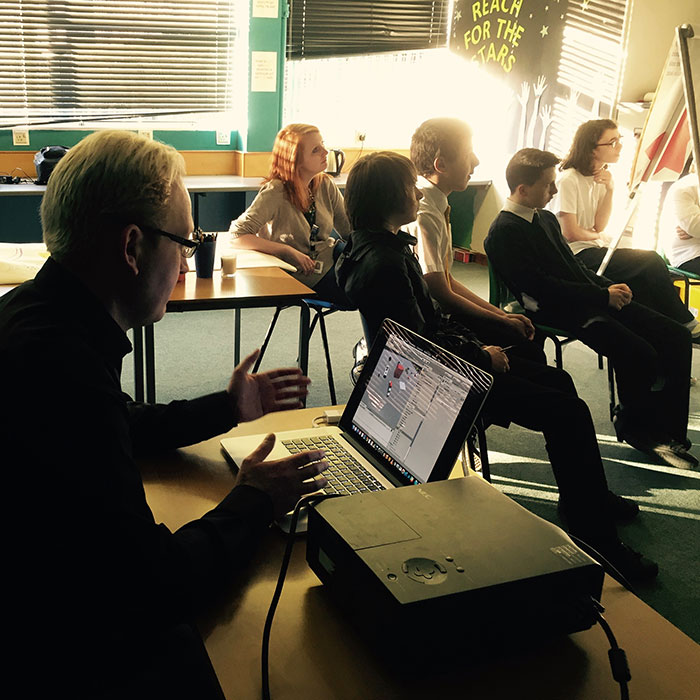
Level 4: Graphics and sound
In this workshop we explored the visuals and sounds of games, from animated characters and stunning environments to music and sound effects. Mal explored creating 2D artwork, which we then incorporated into a game running in the free game engine GameMaker. Pupils designed their own characters and environments and played with 3D sculpting software.
Tom led the pupils on an adventure in the school grounds to explore sounds. The pupils got to make interesting sounds which were recorded and digitally mixed to create a range of sound effects and music which were incorporated into the game engine. We ended the session by designing games and discussing art styles, as well as thinking about the types of sounds that would complement our game ideas.
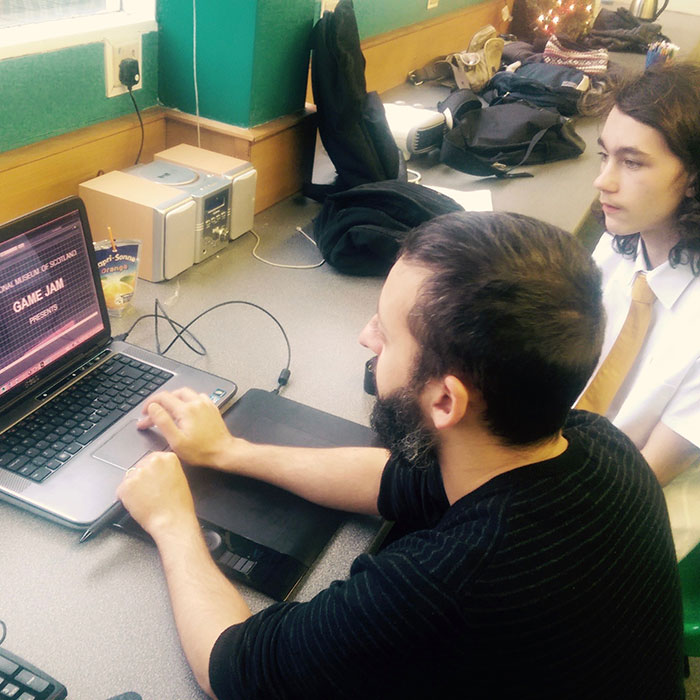
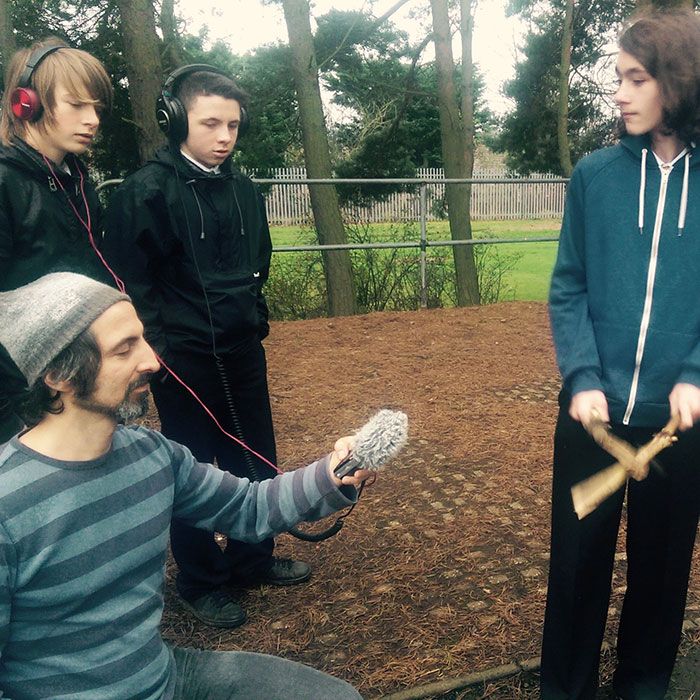
Level 5: Final concept
In our final session we invited the pupils to join us in our office space. We split into two teams made up of school pupils, game developers and National Museums Scotland staff. All was set for the final design session!
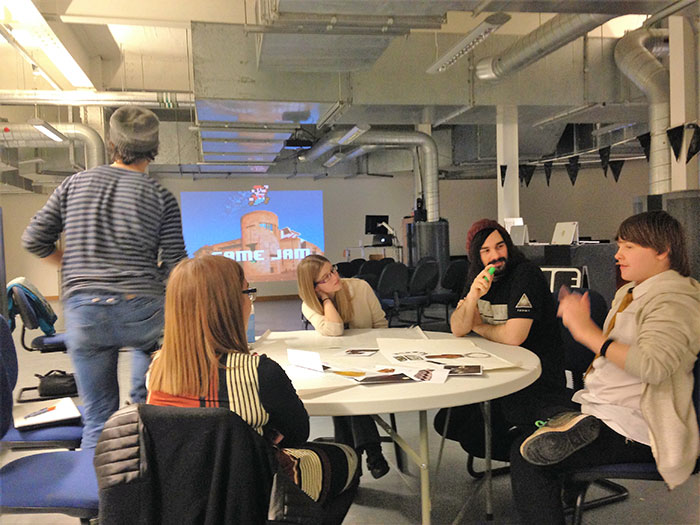
Using big sheets of paper, markers and photographs of the museum collection, we began generating ideas, taking into consideration discussions from the previous workshops.
The enthused and animated school pupils led the process. From Dolly the sheep to the Atom Smasher, inspiration from the museum collections was always at hand. We ended the day by presenting ideas to each other and discussing their merits in detail. The concepts generated were fun, creative and met the needs of National Museums Scotland and, most importantly, the intended audience.
Using all the design ideas generated by the pupils, Tom and the rest of the DGC team came up with a final concept for the game and developed Dolly and the Atom Smasher. The concept for the game comes from ideas the pupils had in the very first workshop in school, adding other suggestions from throughout the process.
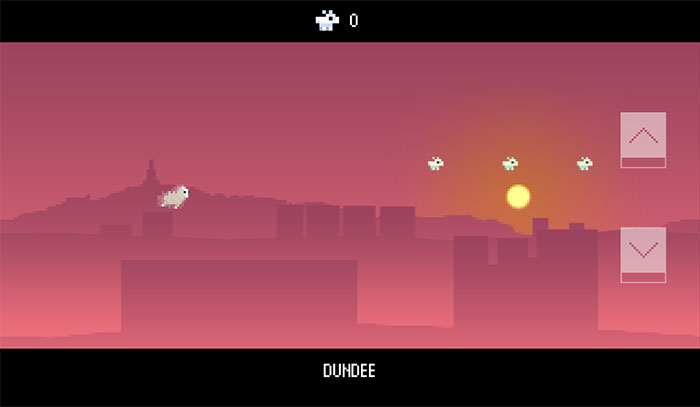
Play the game here and see what you think! It’s the first game on our website to be built in HMTL5, which means it can be played on your computer or phone.
Thanks to the pupils from Craigie High School – Aiden, Andrew, Blaine, John and Reece and their teacher Kelsey. And to Albert, Donna, Mal, Mike and Tom from Dundee Games Collective.
This project was supported by the Esmée Fairbairn Foundation.
